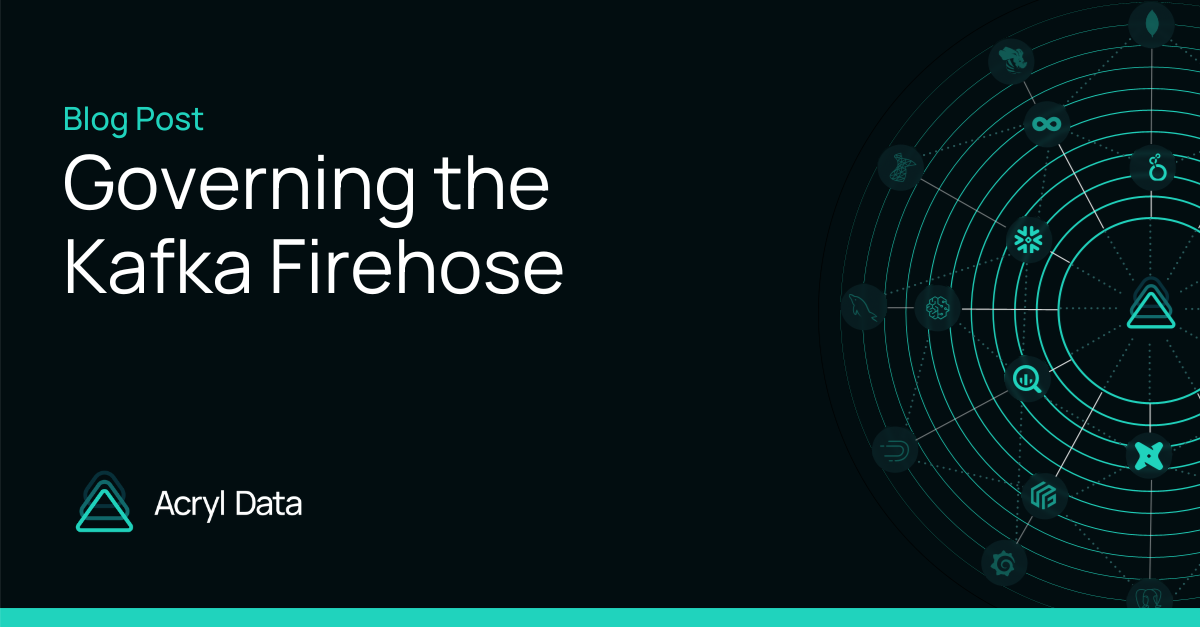When Data Quality Fires Break Out, You're Always First to Know with Acryl Observe
Metadata Management
Snowflake
Data Governance
Data Discovery
Data Quality
Metadata Management
Snowflake
Data Governance
Data Discovery
Data Quality
Metadata Management
Snowflake
Data Governance
Data Discovery
Data Quality

NEXT UP

Governing the Kafka Firehose
Kafka’s schema registry and data portal are great, but without a way to actually enforce schema standards across all your upstream apps and services, data breakages are still going to happen. Just as important, without insight into who or what depends on this data, you can’t contain the damage. And, as data teams know, Kafka data breakages almost always cascade far and wide downstream—wrecking not just data pipelines, and not just business-critical products and services, but also any reports, dashboards, or operational analytics that depend on upstream Kafka data.

Five Signs You Need a Unified Data Observability Solution
A data observability tool is like loss-prevention for your data ecosystem, equipping you with the tools you need to proactively identify and extinguish data quality fires before they can erupt into towering infernos. Damage control is key, because upstream failures almost always have cascading downstream effects—breaking KPIs, reports, and dashboards, along with the business products and services these support and enable. When data quality fires become routine, trust is eroded. Stakeholders no longer trust their reports, dashboards, and analytics, jeopardizing the data-driven culture you’ve worked so hard to nurture
John Joyce
2024-04-17

Data Quality Should be Part of the Data Catalog - Introducing Acryl Observe
We didn’t go looking for an excuse to develop a data observability solution. There’s more than enough to keep us occupied building the world's best data catalog! ;) But the more experience we gained in working closely with Acryl customers, the clearer it became that data quality, data discovery, and data governance aren’t just complementary, but mutually reinforce one another. Acryl Observe provides data teams with everything they need to detect data breakages immediately, contain their downstream impact, keep stakeholders in the loop, and resolve issues fast—so that data teams can spend less time reacting and more time preventing.
John Joyce
2024-04-16
